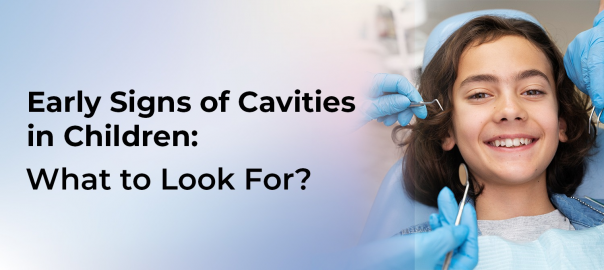
Early Signs of Cavities in Children: What to Look For?
Table of Content
Where there is a tooth, there can be cavities. Tooth decay affects around 20% children between the age of 2-5 years. And cavities when left untreated leads to pain, infection, and even malnutrition if left unchecked. The consequences of untreated tooth decay makes it essential to catch them early.
Children are unable to understand the obvious symptoms of early cavities. As a parent, dental awareness can help you get timely treatment for your little one. During a regular brushing routine, make it a habit to closely examine your child’s teeth. Look out for the following early warning signs:
- White Spots
The first visible sign of enamel demineralization is white spots. Acid secreted by plaque forming bacteria initiates the process. These spots indicate an area of tooth decay in its earliest stage. - Light Brown Discoloration
Appearance of light brown spots or streaks on the tooth surface indicates advanced decay. - Sensitivity
There is a complaint of sensitivity upon intake of hot, cold or sugary foods/drinks.
As decay advances further, you may notice darker brown or black spots on the tooth. When left untreated it may further get infected. It then manifests itself as fussiness, trouble eating, weight issues or facial swelling.
The key is to not ignore even the subtlest of signs. The American Dental Association recommends taking your child for their first dental visit as their first tooth erupts or latest by their first birthday. Thereafter, regular check ups every 6 months are advised by pediatric patients.
These regular check ups allow us to assess and detect for early signs of cavities that may have been missed. Catching cavities early on reduces the need for complex procedures. Fluoride application or simple fillings tend to offer minimally invasive treatment options.
Don’t ignore any signs and get your child evaluated promptly. A good oral care routine at home combined with regular dental visits is the best way to keep those little teeth cavity-free!
Leave a Reply
Leave a Reply
Explore More Similar Posts
Explore More Blogs


Leave a Reply